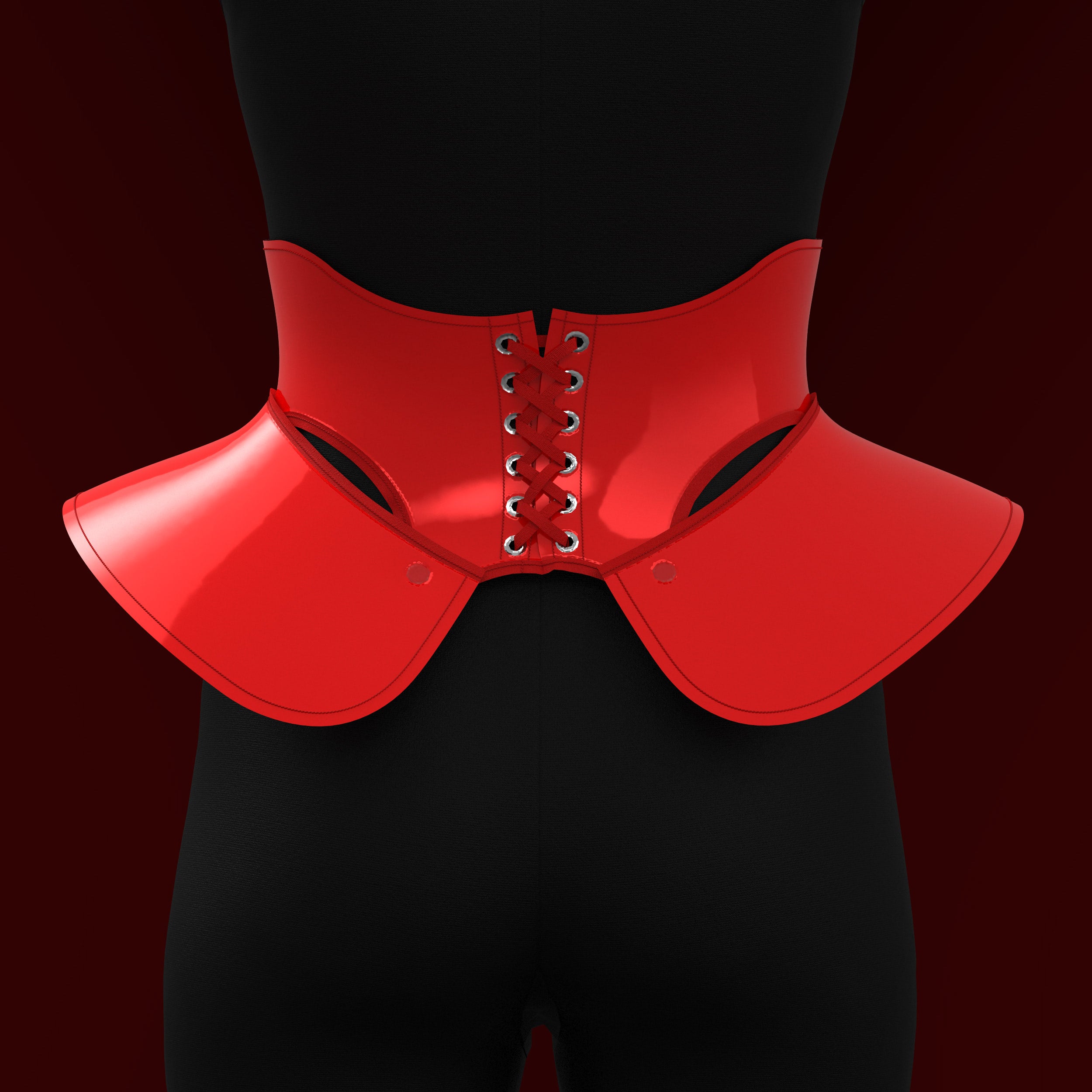
How to Sew a Wave Corset Belt with Hip Flare
Jump to Instructions
Overview
Introducing our fashion waist belt underbust corset sewing pattern, designed for drag queens. This unique and versatile pattern allows you to enhance your figure effortlessly with the addition of detachable hip flares. Whether you're looking to create a bold, hourglass silhouette or make a statement with your drag ensemble, this corset is the perfect accessory. Crafted for non-stretch fabrics, it offers both style and structure, making it an essential staple for every drag queen's wardrobe. Elevate your look, embrace your creativity, and express your unique style with this exceptional pattern.
Pattern Difficulty: Intermediate
Sizing Details
This pattern is available in our unique drag queen sizes (XS-S, M-L, XL-2X). Please review our sizing guide for more information on our size measurements.
Fabric & Notions
Suitable for non stretch fabrics:
- Leather or Pleather
- Vinyl
- Cotton
- Denim
- Fusible Interfacing
- 1/4" Grommets Eyelets
- Snaps
- String or Ribbon
- Boning of Choice
- Optional Bias Trim Tape
Fabric Yardage
This pattern requires the use of non-stretch fabric. Please find the yardage needed for each size below.
| Fabric Width (44”) | XS - S | M - L | XL - 2X |
|---|---|---|---|
| Shell | 0.5 yards | 0.75 yards | 0.75 yards |
| Lining | 0.5 yards | 0.75 yards | 0.75 yards |
| Interfacing | 0.5 yards | 0.75 yards | 0.75 yards |
For information on converting inches to meters, please check out our conversion guide.
Sewing Instructions


Fabric Pieces
After cutting your fabric, you should have two seamless corset pieces and two seamless hip flare pieces. If you're using lightweight, non-stretch fabric, you'll need to cut additional fabric for lining and interfacing using the same pattern. For sturdy materials like thick leather or vinyl, lining and interfacing may not be necessary.

STEP 1
For lightweight, non-stretch fabrics, begin by applying fusible interfacing to the wrong side of either the shell or lining fabrics, and repeat for the hip flare pieces.

STEP 2
Once the interfacing is fused, stack the two corset pieces together with right sides of the fabric facing each other. Sew them together using a straight stitch along one side. This creates the center front seam of the corset.

STEP 3
After sewing, open up the corset and press down the excess fabric of the seam on the wrong side. Repeat these steps for both the shell and lining.

STEP 4
Install plastic boning or sew-on rigilene boning underneath the pressed seams of the fabric with interfacing. Sew the seams down securely. Ensure that the boning is 1 inch shorter than the length of the center front seam. Boning is not needed for the fabric without interfacing, which could be either the shell or lining.

STEP 5
Gather the shell and lining corset fabrics, stacking them right sides facing each other.

STEP 6
Sew them together along the side and top edges. Flip the corset right side out and press the edges. You can trim some of the excess seam fabric for sharper edges.

STEP 7
Determine your preferred method for hemming the open fabric at the bottom of the corset. Options include using bias tape trim or folding in the seam allowance and sewing it closed. After hemming, top stitch all around the corset.

STEP 8
Install eyelets along the back edges of the corset. Alternatively, you can get creative and use zippers, snaps, velcro, or buckles.

STEP 9
Gather the hip flare shell and lining and stack them right sides facing each other. Sew them together along the bottom curved edge.

STEP 10
Flip the hip flare piece right side out and press down the edges. Trim the seam allowance for neater edges if desired.

STEP 11
Repeat your chosen hemming method to close the open gap, then top stitch all around the hip flare. Repeat these steps for the opposite hip flare.

STEP 12
Following the snap guides, install male and female snaps to the bottom edges of the corset and the top edges of the hip flares. Once complete you can snap on your hip flare panels and lace up your newly sewn corset!



















